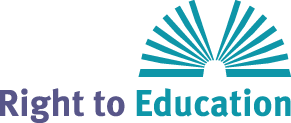The adoption of the OP-ICESCR is only a beginning and that the real challenges lay ahead.
This Commentary is intended to benefit claimants and their advocates and to provide a broader resource for states and the Committee – providing a deeper jurisprudential base on the range of issues likely to be raised. In so doing, the Commentary charts in effect both the legal opportunities but also the limitations.
On 7 July 2014, the UN Committee on the Elimination of Discrimination against Women (CEDAW) held a General Discussion on the Right to Education for Girls and Women, the aim of which is to commence the Committee’s process of elaborating a “General Recommendation on girls’/women’s right to education.”
Thirteen organizations from around the world, included the Right to Education Initiative, presented a written submission to CEDAW on ‘Privatization and its Impact on the Right to Education of Women and Girls,’ highlighting evidence from a range of countries showing that more boys are enrolled in schools than girls, a problem that is exacerbated by the increasing privatization of education. Privatization in many cases deepens gender discrimination in education because already marginalized and vulnerable groups, including women and girls, are more disadvantaged by private provision and are the least able to pay for services.
This paper was commissioned by the Global Education Monitoring Report as background information to assist in drafting the 2019 GEM Report, Migration, displacement and education: Building bridges, not walls.
In 2017, there were an estimated 258 million people living outside their country of origin. Of them, about 30 million were school-aged. Migrants include different groups such as refugees, asylum seekers, migrant workers, stateless, undocumented migrants and internal displaced persons. The right to education of migrants, irrespective of their legal or migration status, is guaranteed under international law on the basis of the human rights principles of equality and non-discrimination. The main treaties guaranteeing the right to education apply to all migrants. In addition, migrant-specific treaties include provisions on the right to education. This international legal framework applies only to the extent that states have committed to it. At national level, migrants face legal and practical barriers to effectively enjoying their right to education. Some states show good examples of protecting the right to education of migrants in law and in practice.
RTE's background paper for the Global Education Monitoring Report 2017/8: Accountability in education: Meeting our commitments.
The purpose of the paper is to show how a human rights-based approach offers insights and practical solutions to address the accountability deficits found in both education policy decision-making and implementation, and the 2030 Agenda for Sustainable Development.
Specifically, the paper argues that a human rights-based approach to accountability can bolster public policy accountability by defining the responsibilities of authorities, ensuring they are answerable for actions regarding those responsibilities, and how they can be subject to forms of enforceable sanctions or remedial action for failures to carry out those responsibilities.
The second half of the paper explores the prevalence of the right to education in national laws and the conditions necessary for the right to education to be successfully adjudicated at the national level. It provides an overview of how countries have incorporated the right to education in their domestic legal orders, as well as a list of countries where the right to education is justiciable. This is complemented by a series of case studies that draw out the requirements for successful adjudication at the national level.
This paper examines court cases from countries around the world to identify the conditions that enable the right to education to be realised through adjudication.
